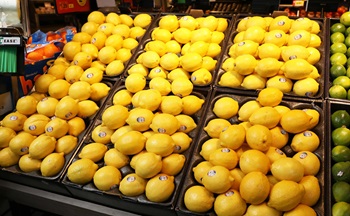The following article originally appear in the June, 2020 Produce Business edition.

By Rick Stein, Vice President, Fresh Foods, FMI
This year has certainly brought a lot of new understandings. One lesson we’ve learned – often painfully – is the power of connections.
In the wake of the COVID-19 pandemic, connections were stretched and sometimes broken in the food supply chain. While some producers and growers were faced with excess product due to closings in the foodservice industry, there were shortages in various retail segments. Those who transport and distribute goods also had their routines upended.
As things have been out of whack for those who provide, ship and sell produce, consumers also have changed their connections. From where they buy products to how they are eating, most people are doing things differently.
Add to the pandemic other global and national upheavals, and you have a marketplace in which connecting with one another and with consumers is more important than ever. I think it’s safe to say that we’ll look back at this year as a pivotal point of change.
Gaining new insights and leveraging resources can help you better navigate such changes while strengthening and making connections. From our vantage point at FMI, we can share some key learnings and next steps to bringing better produce business to fruition for the rest of 2020 and beyond.
Supply Side: A Good Match
Early on in the COVID-19 outbreak, it became apparent that the stressed supply chain required a new and nimble way of providing and receiving goods, including produce items. On one hand, photos of rotting potatoes went viral. On the other hand, images of people lining up for food pantry lines as jobless rates skyrocketed were just as alarming.
To respond to a supply and demand situation in great flux, FMI mobilized with software company The Seam to create a new Food Industry Exchange, a subscription-based digital platform that matches members around the country with suppliers and wholesalers in a secure, real-time and verified way. This new platform connects those in the supply chain who want to sell and buy products, including a wide variety of produce items. We facilitate the process through the platform, but once companies make the connection, we bow out and let them conduct independent transactions.
As a result of the Food Industry Exchange, new relationships have been formed between previously unlinked members in the supply chain, like producers selling to retailers for the first time while their usual restaurant clients were shuttered. Whether or not the pandemic winds down or flares up again in the fall and winter, this platform is designed for the produce business of the future, as parties often seek new buyers and sellers for all kinds of reasons.
Consumer Side: New Habits
This year of challenge and change is also evident in consumers’ behavior. According to a U.S. Grocery Shopper Trends: COVID-19 Tracker report conducted by The Hartman Group and released by FMI, an overwhelming majority of U.S. consumers expect some of their pandemic shopping habits to continue even as the acute crises abates.
One of those noteworthy habits is consumers’ intention to cook more frequently. Almost half of adults (49%) expect to prepare meals more often and 38% say they think they will eat out less often.
At the same time, consumers are aware of supply chain disruptions. Although there were fewer reported out-of-stock experiences in stores in early May compared to late March and early April, 59% of consumers expressed concern about finding specific items they need and 49% said they are worried about the supply chain as a whole.
By finding new avenues for growth with a digital platform that shores up the overall supply chain and working with food retailers to provide consumers with fresh, interesting products to enjoy and use at home, those in the produce industry can bolster their own connections as we all move into its second – and hopefully calmer – half of the year.


 Industry Topics address your specific area of expertise with resources, reports, events and more.
Industry Topics address your specific area of expertise with resources, reports, events and more.
 Our Research covers consumer behavior and retail operation benchmarks so you can make informed business decisions.
Our Research covers consumer behavior and retail operation benchmarks so you can make informed business decisions.
 Events and Education including online and in-person help you advance your food retail career.
Events and Education including online and in-person help you advance your food retail career.
 Food Safety training, resources and guidance that help you create a company food safety culture.
Food Safety training, resources and guidance that help you create a company food safety culture.
 Government Affairs work — federal and state — on the latest food industry policy, regulatory and legislative issues.
Government Affairs work — federal and state — on the latest food industry policy, regulatory and legislative issues.
 Get Involved. From industry awards to newsletters and committees, these resources help you take advantage of your membership.
Get Involved. From industry awards to newsletters and committees, these resources help you take advantage of your membership.
 Best practices, guidance documents, infographics, signage and more for the food industry on the COVID-19 pandemic.
Best practices, guidance documents, infographics, signage and more for the food industry on the COVID-19 pandemic.
